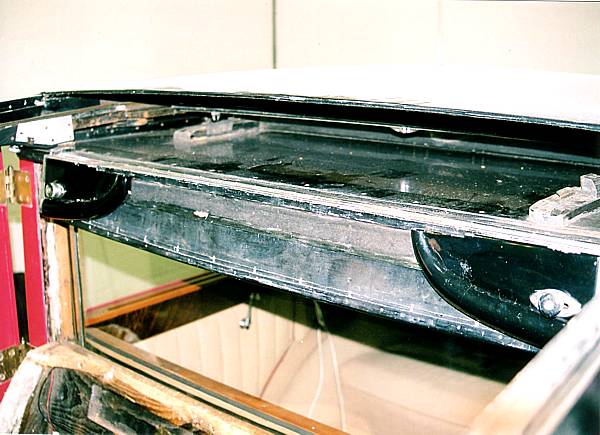
A weird shot: taken from above and looking towards the rear of the car. The rigid sun roof section of the de-ville is parked in the roof void and the front cover panel is hinged downwards.
Unlike many de-ville cars of the period, this body has a sliding sun roof that may be operated in the same way as the modern equivalent. When the roof is moved to its fully open position the two side arms can be unclipped from the top of the windscreen and hinged back into the roof void.
Removal of the sun roof may be achieved in several ways, either by disconnecting one of the swinging side-arms or by unscrewing one of the runners. Under normal circumstances (ie not dismantling the car) great care is required to avoid damage to the paintwork.
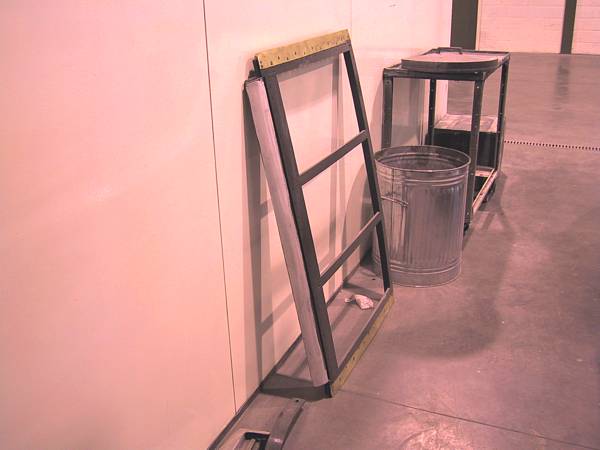
The frame of the sun roof, leaning against the wall, after removal of the fabric skin, inner padding and roof lining. The aluminium skinned front rail is on the left of the photograph; the brass strips support the rails.
Water ingress is prevented, at the front, by a rubber seal located forward of two horizontal interlocking 'U' channels. The sides of the sun roof act like an umbrella, discharging the water into the side arms, which have drains above the 'A' and 'B' posts. The rear of the sun roof is sealed against the main roof by a rubber strip: as the sliding section is closed it compresses the seal as the rear of the sun roof is made to slide up ramps on the runners.
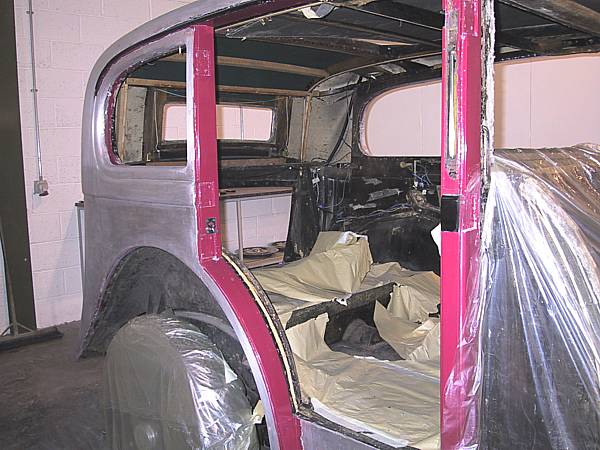
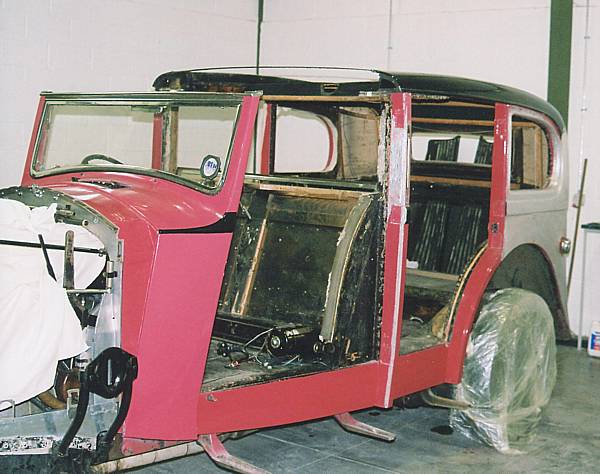
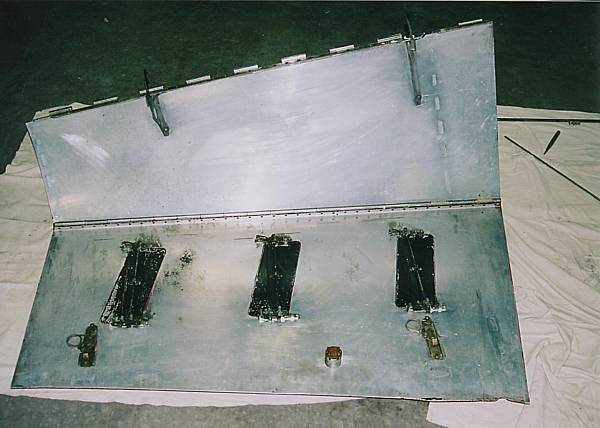
The partly dismantled bonnet with the centre hinge pin removed. A great deal of subtle and unseen work was undertaken on all aspects of the bonnet. All of the locks, latches,flaps and stays were removed; all rivets were inspected. Any loose hinge rivets were drilled out and replaced plus all of the rivets that held the pivot castings for the vents.
New 'Z' springs for the bonnet flaps were remanufactured to replace the bent, worn, rusted and non-original items. Latches and locks were completely dismantled, overhauled, re-chromed where appropriate and then re-assembled. The inside of the bonnet panels and flaps were water-blasted to give a clean, matt finish.